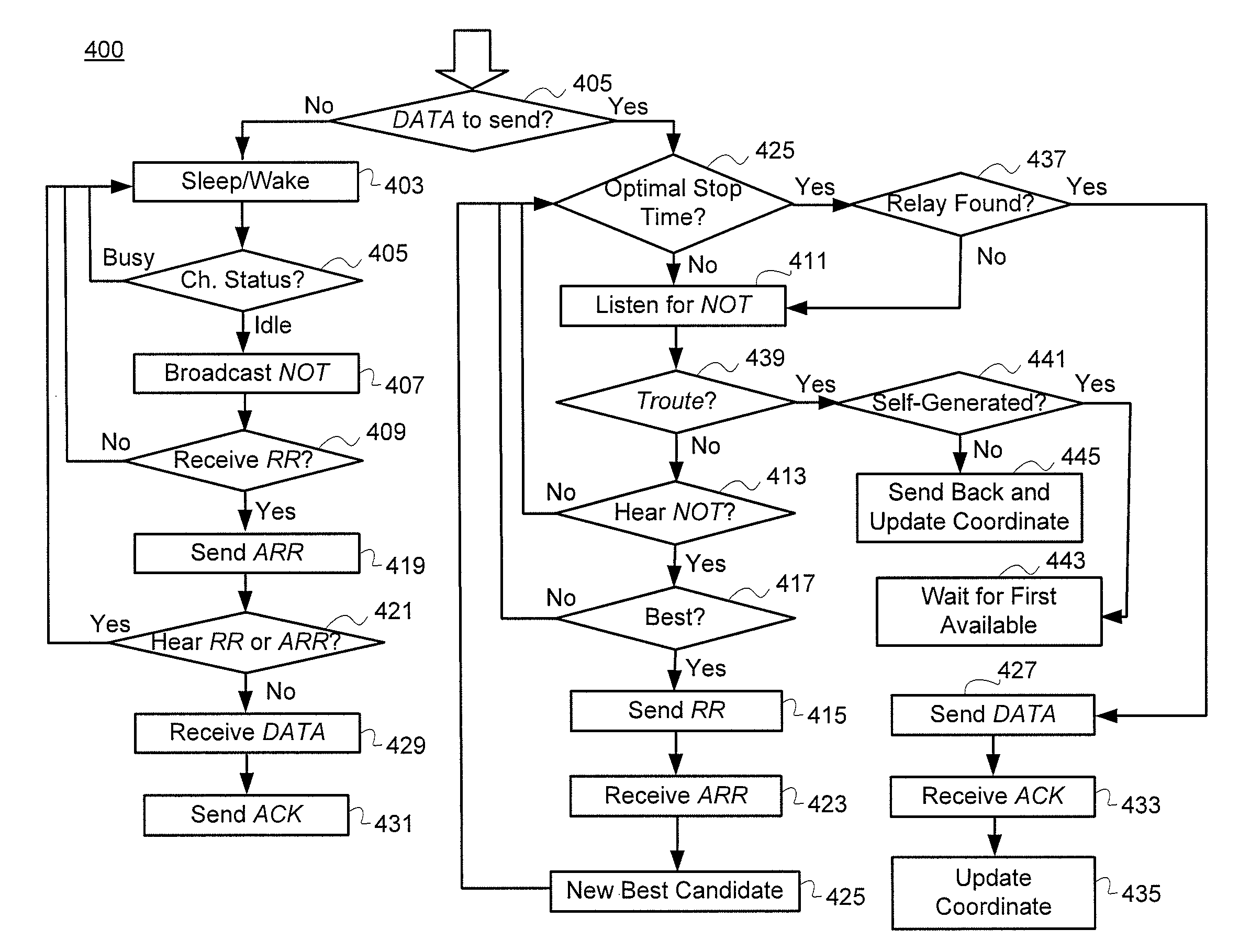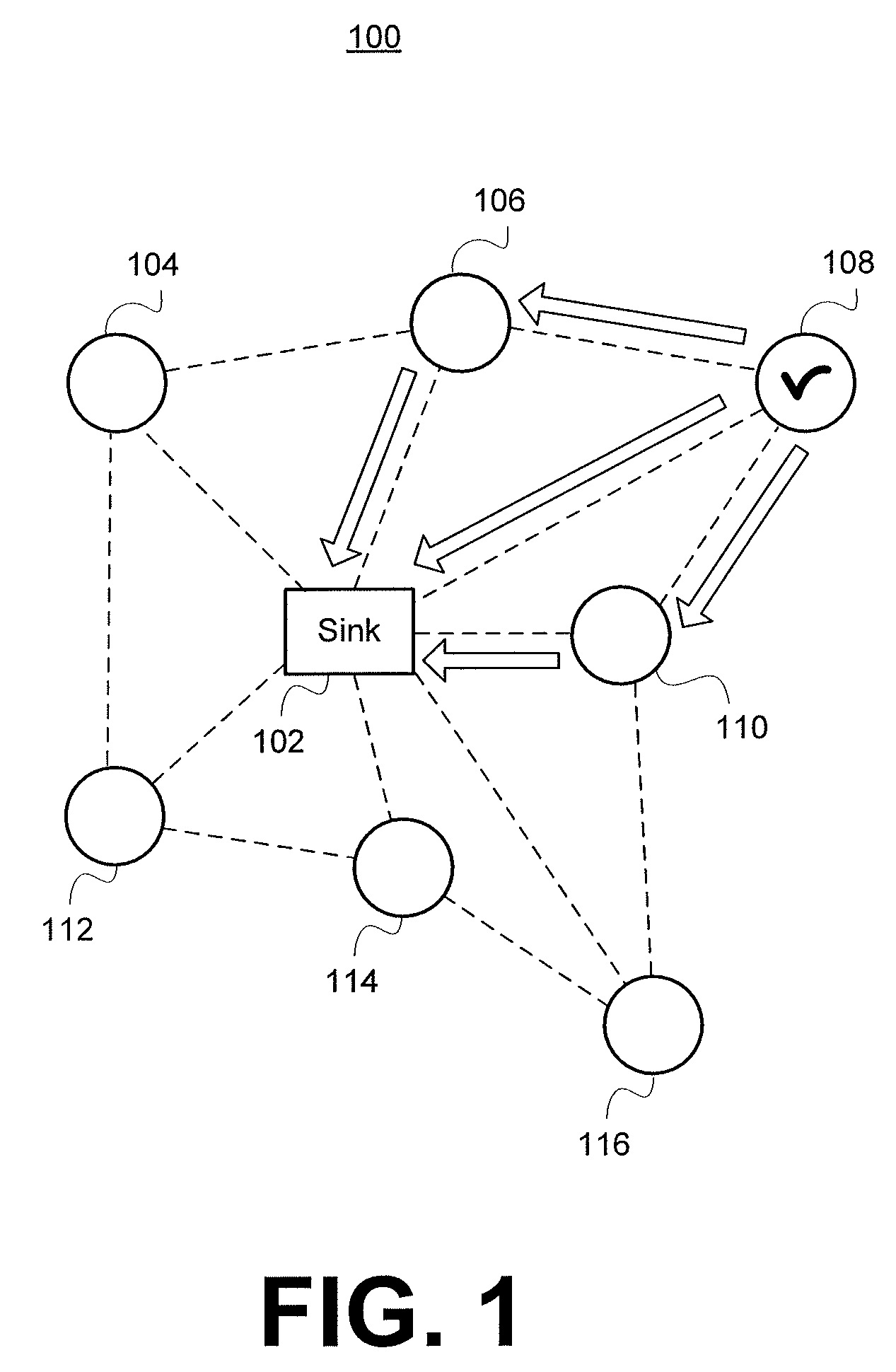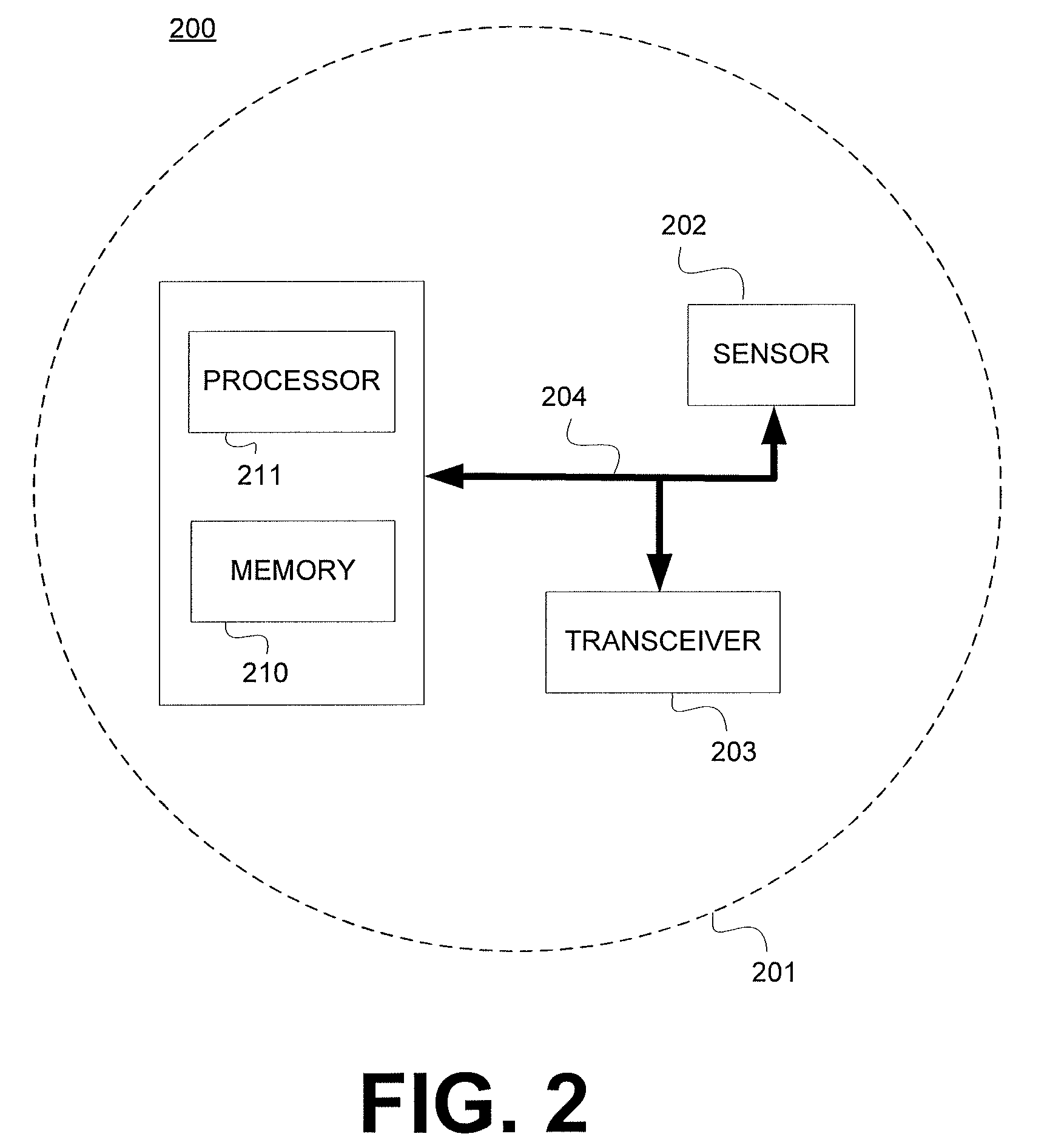Delay-constrained and energy-efficient online routing for asynchronous sensor networks
a sensor network and online routing technology, applied in the field of delay-constrained and energy-efficient online routing for asynchronous sensor networks, can solve the problems of unknown potential waiting cost and additional waiting costs for senders in the process, and achieve the effect of maximizing the lifetime of the wsm
- Summary
- Abstract
- Description
- Claims
- Application Information
AI Technical Summary
Benefits of technology
Problems solved by technology
Method used
Image
Examples
Embodiment Construction
Table of Contents
I. System Model
[0028]A. Link Model
[0029]B. Forwarding Cost and Virtual Coordinate
II. Cross-Layer Routing
[0030]A. Rendezvous Scheme and Relay Selection
[0031]B. Reliable Forwarding
[0032]C. Packet Loss Recovery
III. Optimal Stopping Time
IV. Optimal Sleep / Wake Schedule
V. Simulation
[0033]A. Parameter Setting
[0034]B. Simulation Results
VI. Conclusion
I. System Model
[0035]FIG. 1 depicts a representative part of an exemplary WSN 100 in one embodiment, wherein the WSN may be an event-driven and delay-constrained network where generation of data packets may be triggered by randomly occurring events and should preferably be forwarded to the sink 102 within a maximum allowable delay. For example, if sensor node 108 detects the occurrence of an event and generates a data packet, it may be possible for sensor node 108 to forward the data packet to the sink through node 106, forward the data packet directly to the sink, or forward the data packet to the sink through node 110 as depic...
PUM
 Login to View More
Login to View More Abstract
Description
Claims
Application Information
 Login to View More
Login to View More - R&D
- Intellectual Property
- Life Sciences
- Materials
- Tech Scout
- Unparalleled Data Quality
- Higher Quality Content
- 60% Fewer Hallucinations
Browse by: Latest US Patents, China's latest patents, Technical Efficacy Thesaurus, Application Domain, Technology Topic, Popular Technical Reports.
© 2025 PatSnap. All rights reserved.Legal|Privacy policy|Modern Slavery Act Transparency Statement|Sitemap|About US| Contact US: help@patsnap.com



